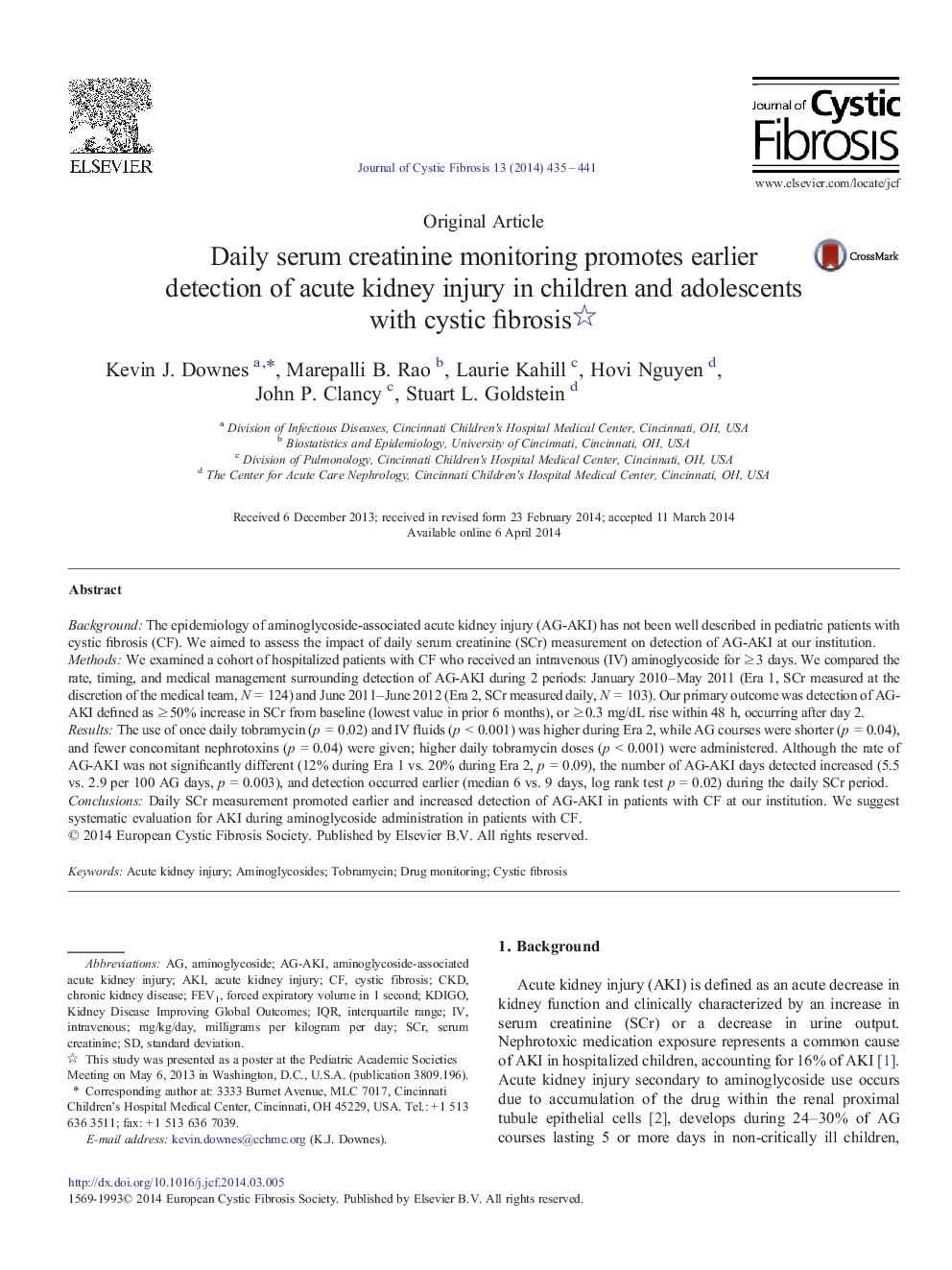| Article ID | Journal | Published Year | Pages | File Type |
|---|---|---|---|---|
| 6240927 | Journal of Cystic Fibrosis | 2014 | 7 Pages |
BackgroundThe epidemiology of aminoglycoside-associated acute kidney injury (AG-AKI) has not been well described in pediatric patients with cystic fibrosis (CF). We aimed to assess the impact of daily serum creatinine (SCr) measurement on detection of AG-AKI at our institution.MethodsWe examined a cohort of hospitalized patients with CF who received an intravenous (IV) aminoglycoside for â¥Â 3 days. We compared the rate, timing, and medical management surrounding detection of AG-AKI during 2 periods: January 2010-May 2011 (Era 1, SCr measured at the discretion of the medical team, N = 124) and June 2011-June 2012 (Era 2, SCr measured daily, N = 103). Our primary outcome was detection of AG-AKI defined as â¥Â 50% increase in SCr from baseline (lowest value in prior 6 months), or â¥Â 0.3 mg/dL rise within 48 h, occurring after day 2.ResultsThe use of once daily tobramycin (p = 0.02) and IV fluids (p < 0.001) was higher during Era 2, while AG courses were shorter (p = 0.04), and fewer concomitant nephrotoxins (p = 0.04) were given; higher daily tobramycin doses (p < 0.001) were administered. Although the rate of AG-AKI was not significantly different (12% during Era 1 vs. 20% during Era 2, p = 0.09), the number of AG-AKI days detected increased (5.5 vs. 2.9 per 100 AG days, p = 0.003), and detection occurred earlier (median 6 vs. 9 days, log rank test p = 0.02) during the daily SCr period.ConclusionsDaily SCr measurement promoted earlier and increased detection of AG-AKI in patients with CF at our institution. We suggest systematic evaluation for AKI during aminoglycoside administration in patients with CF.
